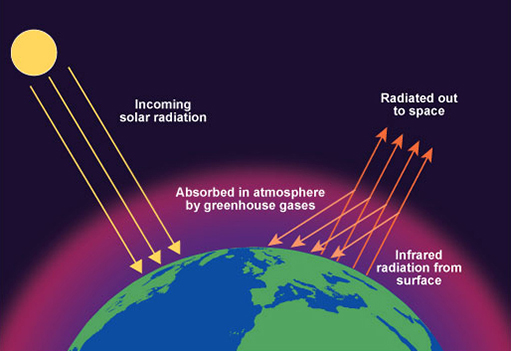2.2 The greenhouse effect
Earth’s atmosphere also has a small amount of carbon dioxide, a so-called ‘greenhouse gas’. Carbon dioxide is very good at absorbing infrared light – the kind described earlier, which is given off by warm things. Because the Earth is also a warm thing, it gives off infrared light, which the carbon dioxide in the atmosphere absorbs and partially re-radiates back towards the Earth. Figure 4 reminds you of this idea. You saw in Week 6 that this ‘greenhouse effect’ plays a vital role in making our planet habitable – without it our world would be frozen.
The problem is that gradually over time we are increasing the amount of carbon dioxide in the atmosphere by burning fossil fuels, and this is stopping the Earth from losing the heat it needs to maintain a constant temperature. That is why we talk about ‘global warming’ – the Earth is gradually warming up because the greenhouse gases in the atmosphere are increasing.
Because Venus’s atmosphere comprises so much carbon dioxide, it is actually the hottest planet in the Solar System – even hotter than Mercury, despite the fact that Mercury is closer to the Sun. So, atmospheres are very important for determining the surface conditions.

